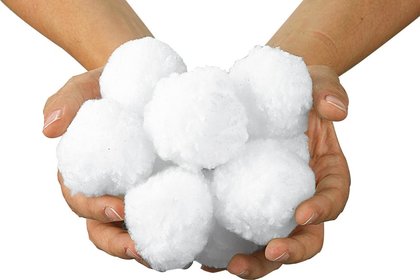Fiber Replacement Media for Swimming Pool and Spa Filters: Does It Hold Up?

Wednesday, October 31, 2018
NSF International has developed a new reliability and performance test for sand-replacement media.
This media is composed of a polymer fiber ball that ranges from 2 to 4 inches in diameter and replaces the sand filtration media in sand filters. These products are often touted as easier to use and less expensive because they are lightweight and composed of plastic polymers.
But do they work?
The new reliability and performance test scheme addresses this question via tests both new and old. They begin with pressure testing to ensure that initial head loss does not exceed filter design parameters and that the turbidity reduction is 70 percent or more over five turnovers.
Next, a cleaning test is conducted to backwash the media and recheck pressure loss across the filter. Pressure loss after backwashing cannot exceed filter design parameters. These are the same performance requirements as for sand and granular sand-replacement media. Likewise, these tests are conducted in a filter designed for granular sand media, thus demonstrating whether the polymer fiber balls meet their replacement claims.
These products are fundamentally different in materials and construction compared to sand and sand-replacement media. Thus, new testing was designed to address performance parameters and product longevity.
Depending on the construction quality of the polymer fiber balls, fiber loss could occur. Loose fibers will reduce the efficacy of the media, create aesthetically displeasing additions to pool water and potentially create mechanical problems for the pump and other plumbing components. Thus, the polymer fiber media is weighed to measure fiber loss before and after conditioning. Fiber loss cannot exceed 1 percent, by dry weight.
Another concern centers on the lifetime of thin polymer fibers in a strongly chlorinated environment. Thus, fibers cannot demonstrate deterioration or degradation after 30 days of exposure to chlorinated water. The water’s free available chlorine (FAC) alternates between 2 mg/L FAC and 10 mg/L FAC to simulate multiple health and safety events that require elevated FAC for effective disinfection.
Media behavior in the filter chamber is a component of existing performance requirements for sand and sand-replacement media. Channeling is measured as media migration effects reduce the granular media’s ability to reduce turbidity. Similarly, compaction is a concern for polymer fiber media because it will reduce the available spaces for capturing particulate. Thus, this parameter is also examined during testing.
Using this new performance test scheme, NSF evaluated polymer filter media and several were certified after meeting the requirements. This provides recreational facility operators and safety inspectors a new tool to assess whether polymer fiber balls are the right choice for a recreational water facility.